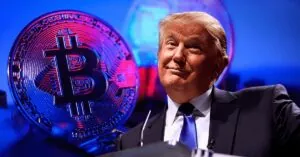Donald Trump has officially banned the creation of a US central bank digital currency (CBDC), but some experts see this as more of a symbolic move. Financial analyst and U.S. Army veteran Tony Arterburn suggests that the real threat may not be CBDCs, but rather stablecoins such as XRP $3.12 XRP 3.20% Market capitalization $186.3 billion VOL. 24 hours $0.48 billion ,, or USDC $1.00 Bridged USD Coin (StarkGate) 0.00% Market capitalization $81.19 million VOL. 24 hours $13.53 billion , which can replace government digital currencies.
In the podcast of The Free Thought Project, Arterburn expressed fears that in the future, stablecoins could become a tool of financial control. According to him, major players such as Elon Musk or Peter Thiel support the idea of a centralized digital financial system, although they formally oppose CBDC. According to Arterburn, governments may opt out of public digital currencies, instead relying on existing private assets.
Although Trump’s executive order has been welcomed by his supporters, the text of the document itself has raised questions. It talks about supporting the development of «dollar-centric stablecoins around the world.» In fact, this opens the way for private financial institutions to become part of the public system, with all the consequences for users.
Meanwhile, interest in stablecoins continues to grow. For example, Japan has recently officially launched USDC on the SBI VC Trade platform. At the same time, Tether, the largest stablecoin by capitalization, cooperates with the authorities by blocking user addresses at the request of law enforcement. This is exactly how CBDCs would work — they would block accounts that the state deems undesirable.
According to Arterburn, the main threat is that control over money could be gained not by democratically elected people, but by corporations and technocrats who will dictate their own rules. And even if it is not an official CBDC, a state-controlled digital system may still emerge — just in a different form.


